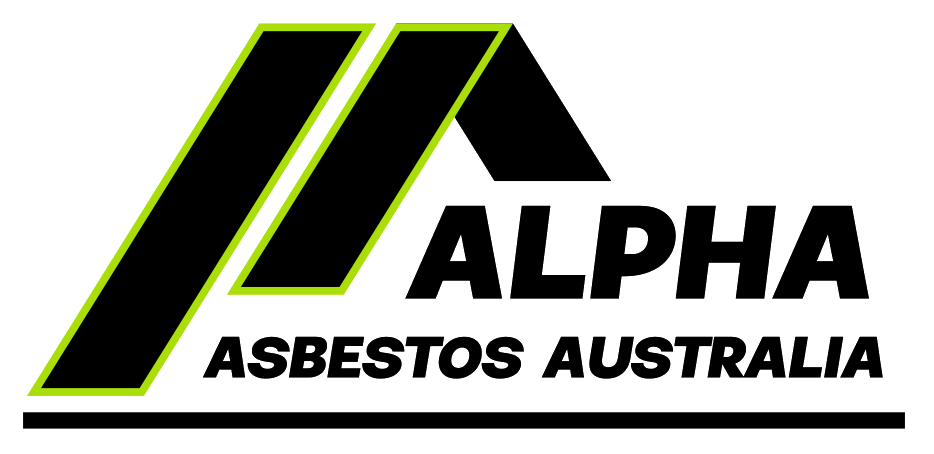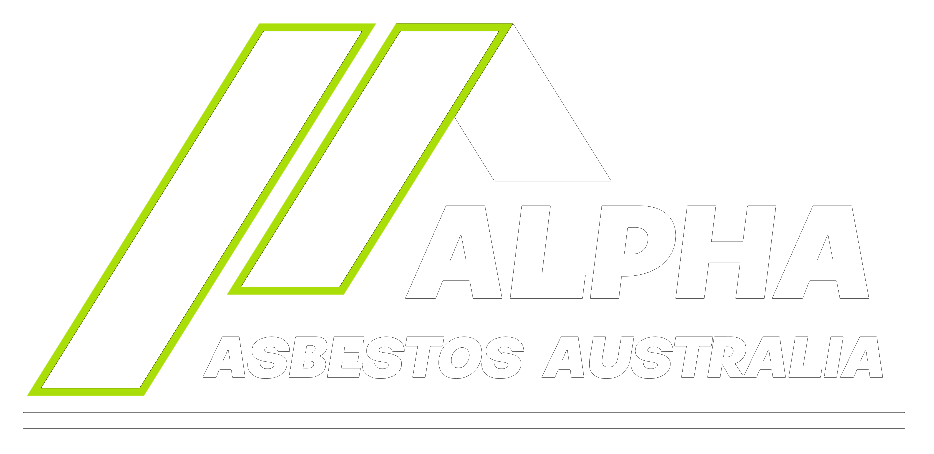Asbestos Awareness
Asbestos Awareness for Homeowners & Renovators
Planning to renovate? Be asbestos-aware.
If your home was built before 1990, there’s a high chance asbestos may be present. It’s crucial to understand how to safely manage it to protect yourself and those around you.
If you suspect asbestos — STOP. Do NOT:
- Cut it
- Drill it
- Drop it
- Sand it
- Saw it
- Scrape it
- Scrub it
- Dismantle it
- Tip it
- Waterblast it
- Demolish it
- Dump it
Asbestos must be handled by licensed professionals.
For safe removal, contact Alpha Asbestos Australia today.



Asbestos & Bushfires: What You Need to Know
Asbestos & Bushfires: What You Need to Know
When homes or buildings are destroyed by bushfires, the remaining rubble and ash may pose serious health risks — especially if asbestos-containing materials were present. Airborne ash and smoke can carry asbestos fibres, increasing the risk of inhalation.
Why It Matters
Australia was one of the highest users of asbestos-containing materials worldwide. If you’re in a bushfire-affected area, there’s a chance asbestos is present in the remains of older buildings, especially those built or renovated before 1987.
Where Asbestos Might Be Found
- Roofing sheets (corrugated or flat)
Wall and ceiling panels
Pipes and electrical conduit
Eaves, floor tiles, sheds, garages
Key Risks
- Airborne asbestos fibres may be released when structures are damaged or destroyed by fire.
Asbestos fibres in dust and ash pose a serious risk if disturbed and inhaled.
Friable asbestos (easily crumbled and airborne) may result from extreme fire damage.
Non-friable asbestos (still intact) can still pose a risk if improperly handled.
Safety Tips After a Bushfire
- Do not enter the property until declared safe by emergency services or local authorities.
Avoid disturbing ash, rubble, or debris — especially if you suspect asbestos may be present.
Never use high-pressure water to clean up ash or debris, as it can release fibres into the air.
Wear protective gear:
P2 respirator or higher (ideally a fitted respirator)
Disposable coveralls, gloves, shoe covers
Moisten ash gently to reduce dust, but do not spread it around your property.
Important Reminders
- Do not bury building rubble, as it may contain asbestos or other hazardous materials.
Seek professional help: Only licensed asbestos professionals should handle cleanup and removal.
Avoid DIY removal of any burnt or damaged materials that may contain asbestos.
If you’re concerned your property may contain asbestos after a bushfire, contact Alpha Asbestos Australia for a safe assessment and professional cleanup. Your health and safety come first.
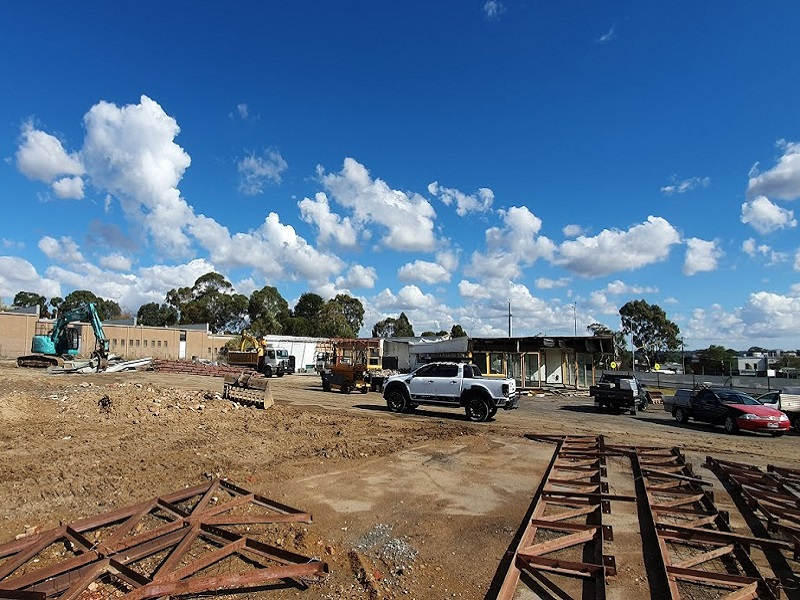


Understanding Asbestos
Important Reminders
Asbestos is a naturally occurring fibrous silicate mineral once widely used in construction due to its durability and resistance to heat, fire, water, and chemicals.
While it was valued for its versatility, asbestos becomes a serious health hazard when its microscopic fibres are released into the air and inhaled. This can occur during damage, disturbance, or improper removal of asbestos-containing materials.
Types of Asbestos in Buildings
Non-Friable Asbestos (Bonded)
- Definition: Non-friable asbestos is mixed with other materials and cannot be crumbled or reduced to powder by hand when dry.
Common Uses:
Flat or corrugated asbestos cement sheets (e.g., fibro)
Water, drainage, and flue pipes
Vinyl floor tiles
Risk Note: When damaged by fire, hail, drilling, sanding, or high-pressure water, bonded asbestos may become friable and dangerous.
Friable Asbestos
- Definition: Friable asbestos is any material that contains asbestos and is easily crumbled or turned to powder by hand pressure when dry.
Common Uses:
Pipe lagging
Sprayed insulation (limpet)
Asbestos cloth and rope
Warning: Friable asbestos poses a high health risk and must only be removed by a licensed asbestos removalist with a Class A (friable) licence.
Your Safety is Our Priority
If you suspect asbestos on your property—especially during renovations, damage, or demolition—do not disturb it. Contact Alpha Asbestos Australia for professional inspection, testing, and safe removal and asbestos disposal.
20-Point Asbestos Safety Check
Get to Know Asbestos – Protect Your Family and Your Home
Australia has one of the highest rates of asbestos use in construction. If your home was built or renovated before 1987, there’s a high chance it contains asbestos. Here’s what every homeowner and renovator should know:
At least one-third of Australian homes—brick, weatherboard, fibro, and apartments—contain asbestos.
If your home was built or renovated before 1987, it likely contains asbestos.
Asbestos is dangerous only when disturbed. Renovations or maintenance can release harmful fibres.
DIY projects in areas with potential asbestos are not recommended.
If you’re unsure, always assume asbestos is present and take appropriate safety precautions.
Asbestos is serious—but with the right advice and professionals, it’s manageable.
Hire a licensed asbestos assessor or removalist to inspect your property if unsure.
Asbestos cement products were used in:
Fibro sheeting (flat & corrugated)
Roofing, flue, and drainage pipes
Floor and wall tiles
Eaves, fences, sheds, garages
Don’t cut, drill, drop, sand, saw, scrape, scrub, dismantle, tip, waterblast or demolish it!
And absolutely don’t dump it!
Asbestos in good condition is generally safe if left undisturbed. You can paint over it and monitor for damage.
There are strict laws and regulations for the management, removal, and disposal of asbestos.
Even if legal, removing it yourself carries serious health risks. Always consider professional help.
Friable asbestos (loose fibres) can only be removed by professionals with a Class A licence.
Professional asbestos removal is often no more expensive than electricians, tilers, or plumbers.
Disposal at an approved facility is usually included in a professional’s service.
If you must do any work, you must wear:
P2 mask or respirator
Disposable coveralls
Gloves and shoe covers
And follow legal procedures carefully.
Download Asbestos Fact Sheet 1 & 2 to learn how to work safely if removal is unavoidable.
Power tools release dangerous fibres.
Never use: drills, sanders, grinders, circular saws, or compressed air.
High-pressure water blasters or hoses must never be used on asbestos-containing materials.
Think Smart. Think Safe. Think Alpha Asbestos.
Because it’s not worth the risk.
The Hidden Dangers of Asbestos
Why Asbestos Dust and Fibres Pose a Serious Health Risk
Working with or disturbing asbestos without proper safety measures can expose you and your loved ones to severe, long-term health risks.
There is no safe level of asbestos exposure.
Even minimal contact with airborne fibres can be harmful.When asbestos-containing materials are cut, broken, sanded, or disturbed, they release microscopic dust particles into the air. These fibres can easily be inhaled and become lodged in the lungs.
Inhalation of asbestos fibres can lead to life-threatening illnesses, including:
Asbestosis – a chronic lung condition caused by scarring of lung tissue.
Lung Cancer – the risk is significantly higher for smokers exposed to asbestos.
Mesothelioma – a rare and aggressive cancer typically affecting the lining of the lungs.
There is currently no cure.
🚫 Don’t Take the Risk
If you suspect asbestos is present, do not touch or disturb it. Contact a licensed asbestos removal specialist to handle it safely and legally.


Asbestos-Related Diseases
When asbestos fibres are inhaled, they can become embedded in lung tissue, causing irritation and long-term damage. These effects often take years or even decades to appear. Most asbestos-related diseases develop 15 to 40 years after exposure, often without early warning signs.
Mesothelioma
Mesothelioma is a rare but aggressive cancer that forms in the lining of the lungs or abdomen (the mesothelium). It is typically diagnosed at an advanced stage, making effective treatment extremely challenging.
Average life expectancy after diagnosis: 10–11 months
Can be triggered by even minimal exposure to asbestos
Often appears 30–40 years after initial contact with asbestos
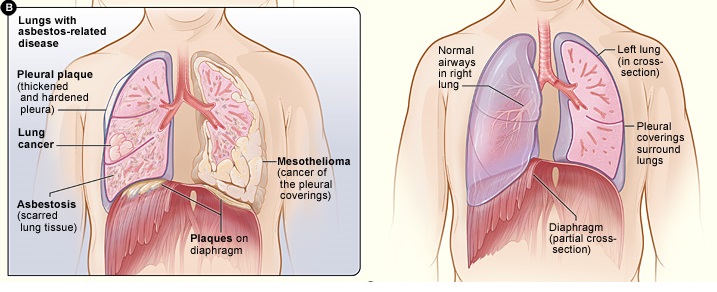
Pleural Disease
Pleural disease affects the outer lining of the lungs (pleura) where asbestos fibres settle.
Causes thickening of the pleura (either widespread or in plaques)
May result in fluid build-up and restricted lung function
Asbestosis
Asbestosis is a chronic lung condition caused by heavy, prolonged exposure to asbestos.
Leads to inflammation and scarring of lung tissue, making breathing difficult
Common symptoms include:
Chest tightness
Dry, persistent cough
Shortness of breath
In advanced cases: bluish skin tone due to lack of oxygen
Most common among former asbestos miners, insulation workers, and asbestos product manufacturers
Typically develops over 10+ years
Lung Cancer
Long-term asbestos exposure significantly increases the risk of lung cancer—especially among smokers. The combination of smoking and asbestos exposure multiplies the likelihood of developing the disease.
Asbestos Safety Facts
The 20-Point Safety Checklist Every Homeowner Should Know
1 in 3 Australian homes contain asbestos—this includes brick, weatherboard, fibro, and clad homes and apartments.
If your home was built or renovated before 1987, it’s likely to contain asbestos materials.
Disturbing asbestos during DIY, maintenance, or renovations can expose you and your family to serious health risks.
DIY is not recommended if asbestos may be present—get expert help instead.
If you’re unsure, assume asbestos is present and take every safety precaution.
Managing asbestos is important—but it’s not overwhelming when done safely.
Licensed asbestos assessors or removalists can inspect your home and confirm if asbestos is present.
Common asbestos products include:
Fibro sheeting (flat or corrugated)
Flue, water, and drainage pipes
Roof shingles, guttering, wall and floor coverings
If you discover asbestos:
Don’t cut, drill, sand, scrape, saw, scrub, tip, demolish, or dump it. Don’t waterblast it either!Asbestos in good condition and left undisturbed usually poses no immediate risk. Paint it, leave it, and check it regularly for wear or damage.
There are strict legal requirements for handling, removing, and disposing of asbestos.
While minor removal is legally allowed by trained individuals, the safest option is always hiring a licensed professional.
If asbestos is friable (easily crumbled), only licensed friable asbestos removalists are permitted to remove it.
Professional asbestos removal is affordable—comparable in cost to other trades like electricians or plumbers.
Disposal fees are often included when you hire a licensed removalist.
If you must remove asbestos yourself, follow legal and safety protocols to limit fibre release.
Wear proper protective gear: disposable coveralls, gloves, and an approved P2 respirator or mask.
Minimise dust at all times, and ensure legal disposal of materials.
Never use power tools (e.g., drills, grinders, sanders) or high-pressure hoses or compressed air on asbestos—it makes fibres airborne.
Don’t risk it:
Think smart. Think safe. Visit asbestosawareness.com.au.
Because it’s not worth the risk.


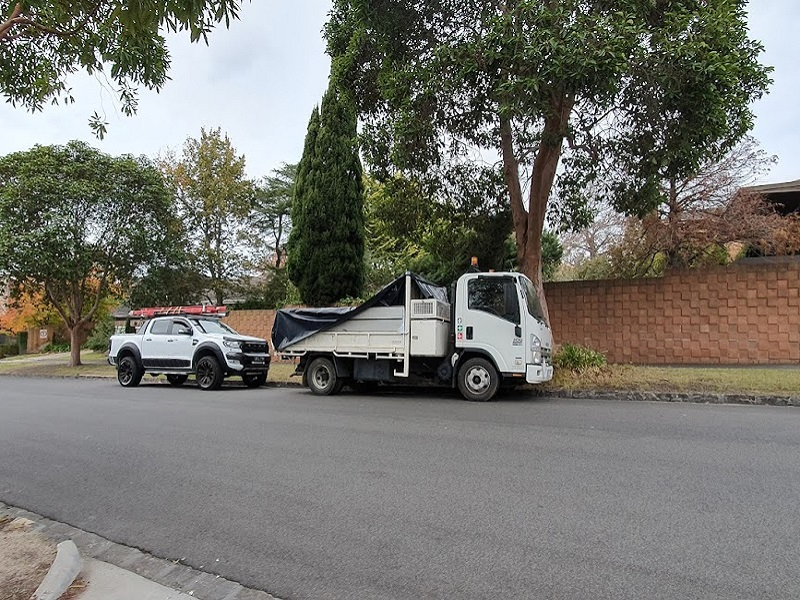


Asbestos in the Home
If your home was built or renovated before the mid-1980s, there’s a high chance it contains asbestos cement products. During that period, asbestos was commonly used in a wide range of building materials due to its durability and resistance to fire and moisture.
Common asbestos-containing materials include:
Flat and corrugated fibro sheeting
Water, drainage, and flue pipes
Roof shingles and guttering
Vinyl flooring backing and underlays
Why Safe Management is Essential
You can’t identify asbestos just by looking at a material. If disturbed without proper precautions, asbestos can release harmful fibres into the air, posing serious health risks.
Never attempt to:
Cut, drill, drop, sand, saw, scrape, scrub, dismantle, tip, waterblast, demolish, or dump materials suspected of containing asbestos.
If You Must Work Near Asbestos:
Avoid creating dust or disturbing the material
Always follow proper safety guidelines and legal requirements
If in good condition, asbestos materials are generally safe if left undisturbed
The safest approach is to seal them with paint and leave them in place
EXCELLENTTrustindex verifies that the original source of the review is Google. I’m a Residential & Commercial builder and have used Alpha Asbestos Australia on multiple sites. Always on time, no dramas, and they know what they’re doing. Wouldn’t use anyone else for asbestos removals in Melbourne.
Owner's reply
Thank you for your ongoing trust and support. We really value our long-term relationships with builders like yourself and are glad to hear our team has consistently met your expectations. It’s always a pleasure working with you, and we look forward to assisting on many more projects across Melbourne.Posted onTrustindex verifies that the original source of the review is Google. Highly reliable and trustworthy team. I appreciated how they kept safety front and centre, while also being respectful of our property. The whole process was stress-free and well managed. Highly recommend!
Owner's reply
Thank you for your wonderful feedback! Safety and respect for our customers’ homes are always our top priorities, so it’s great to hear that came through. We’re glad we could make the process stress-free for you and truly appreciate the recommendation!Posted onTrustindex verifies that the original source of the review is Google. I was a bit stressed when I found out we had asbestos, but Alpha Asbestos Australia made it really simple. They were professional, explained everything clearly, and gave me peace of mind. Easily one of the most reliable asbestos removal services in Melbourne.
Owner's reply
Thank you so much for your kind words! We understand how stressful it can be to discover asbestos, and we’re glad we could make the process simple and reassuring for you. Providing clear communication and peace of mind is exactly what we aim for really appreciate your recommendation!Posted onTrustindex verifies that the original source of the review is Google. They really know their stuff. From the quote to the clean-up, Alpha Asbestos made it super straightforward. Their team was polite, efficient, and fair with pricing. Best asbestos removal company I’ve dealt with.
Owner's reply
Hi Damien, Thank you for your fantastic feedback. We’re so pleased to hear you found the process straightforward and our team polite and efficient. Your kind words and recognition mean a lot to us, and we’re glad we could deliver the service you expected.Posted onTrustindex verifies that the original source of the review is Google. Nobody wants to hear they’ve lived near asbestos for some time without realising but alpha asbestos were quick on the job with removal no worries. Highly recommend for any asbestos needs, thank you A+
Owner's reply
Hi Anthony, We’re glad we could help make a difficult situation a little easier. Thank you for your trust, kind words, and recommendation it’s greatly appreciated by our team!Posted onTrustindex verifies that the original source of the review is Google. From start to finish, the team was fantastic. They handled the asbestos removal quickly and safely and kept me updated throughout the whole process. Everything was done on time and with no mess left behind. Would definitely use them again.
Owner's reply
Hi Toree, Thank you for your kind words and for taking the time to share your experience. We’re so pleased to hear that you were happy with our work and communication throughout the process. The team will be thrilled to know their efforts made such a positive impression. We truly appreciate your trust in us and look forward to helping you again in the future.
